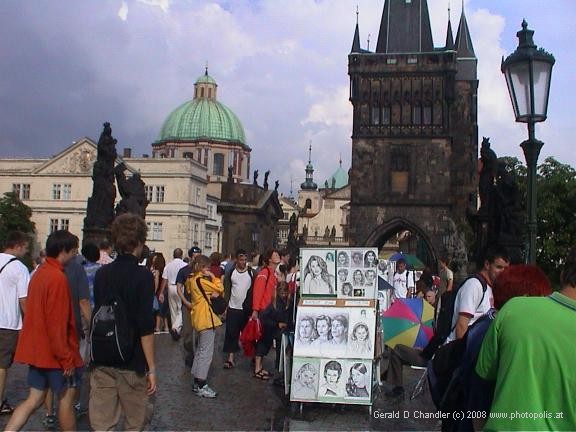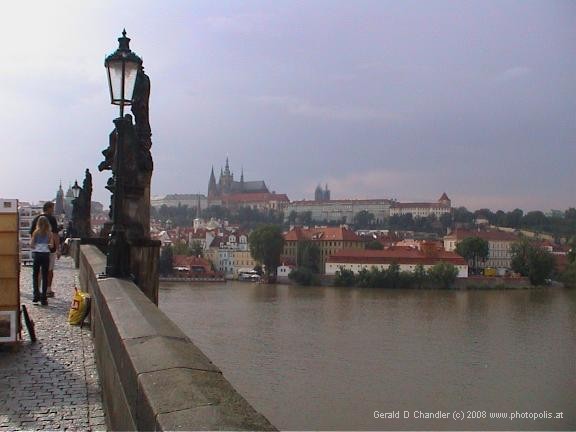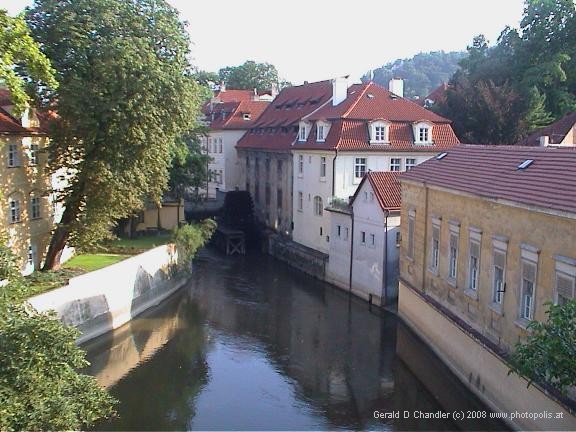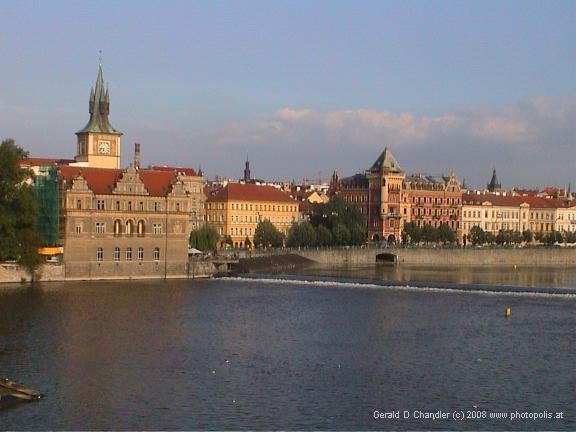Home | Front Page | Index | Blog | New | Contact | Site Map
Prague Intro
Old Town
Charles Bridge
Castle Hill
Josephov
North-East
Wenceslas Square
Vysehrad
Vltava
Foto Show

Egypt
Israel
Turkey
Bulgaria
Romania
Ukraine
Poland
Prague
Britain
USA 2002
Travel Map
Charles IV (1316-78) ordered the construction of his eponymous bridge in 1357, two years after he became Holy Roman emperor. As usual for government contracts, the work was delayed and the bridge was not completed until the early 1400s, a little too late to be of any particular interest to Charles.
The future emperor, Charles of Luxemburg (one of Charlemagne's territories), became king of Bohemia in 1346. At that time, as now, Prague was the main city of Bohemia and was dominated by German nobles. The Holy Roman Empire was really a German thing, set up by Charlemagne. Charles was elected Emperor of the Holy Roman Empire in 1355. With his new power and prestige he set out to make Prague into a truly imperial capital.
Since its opening, the bridge has been the site of scores of gatherings and events, including royal processions, markets, jousting tournaments, and battles. Every so often it has been damaged by a severe flood, but always has been rebuilt. Just last year there were severe floods in Prague. Much of Old Town was under water for a while. Charles Bridge was threatened, but survived intact.

South-east end of Charles Bridge with East Tower, looking toward Old Town
|
It seems a bit harsh to say it, but the Charles Bridge is a tourist trap. You should go, but the weight of the crowd can drown the historic and beautiful atmosphere of the bridge. As you arrive from Old Town you pass the east tower. In times past, this was an important place for guarding the bridge — there were also terrorists, anarchists, and plotters long ago. Today, it is a very pleasant sight to look back and see the tower and the green domed churches just a bit farther back, pleasant, that is, if you can look past and forget the many hawkers around.

South-east end of Charles Bridge, looking toward St Vitus Cathedral and Prague Castle |
Looking the other way, that is, west, you can easily see the spire and roof of St Vitus' Cathedral and below and around it the walls of Prague Castle. Much closer, on the bridge itself, you will see dozens of statues, some of very good quality and beauty. Most are baroque and most were added in the eighteenth and nineteenth centuries. Seek out the statues of Saints Cyril and Methodius. They were the inventors of the cyrillic alphabet; it is named for the first and used for writing most slavic langues, including Russian, Ukrainian, Bulgarian and Serb. Poles and Czechs, who ended up Roman Catholic (it wasn't always a happy choice; see what happened to John Huss) also ended up using the Latin alphabet.

Canal paralleling Vltava River, near Charles Bridge |
The bridge is nearly a third of a mile long, so you won't cross it in one blow. At the far end there is another tower. Pass through it and you are on the left bank; you are nearly in the Lesser Quarter. Just before you get there you pass what I'll call the Canal District since I don't know its offical name. Later, after you visit the Castle, if you have time, explore this beautiful spot.

Weir on Vltava River, with view of right bank riverfront buildings near Old Town |
From the bridge or the left bank you can look back at the right bank and just enjoy the serenity.